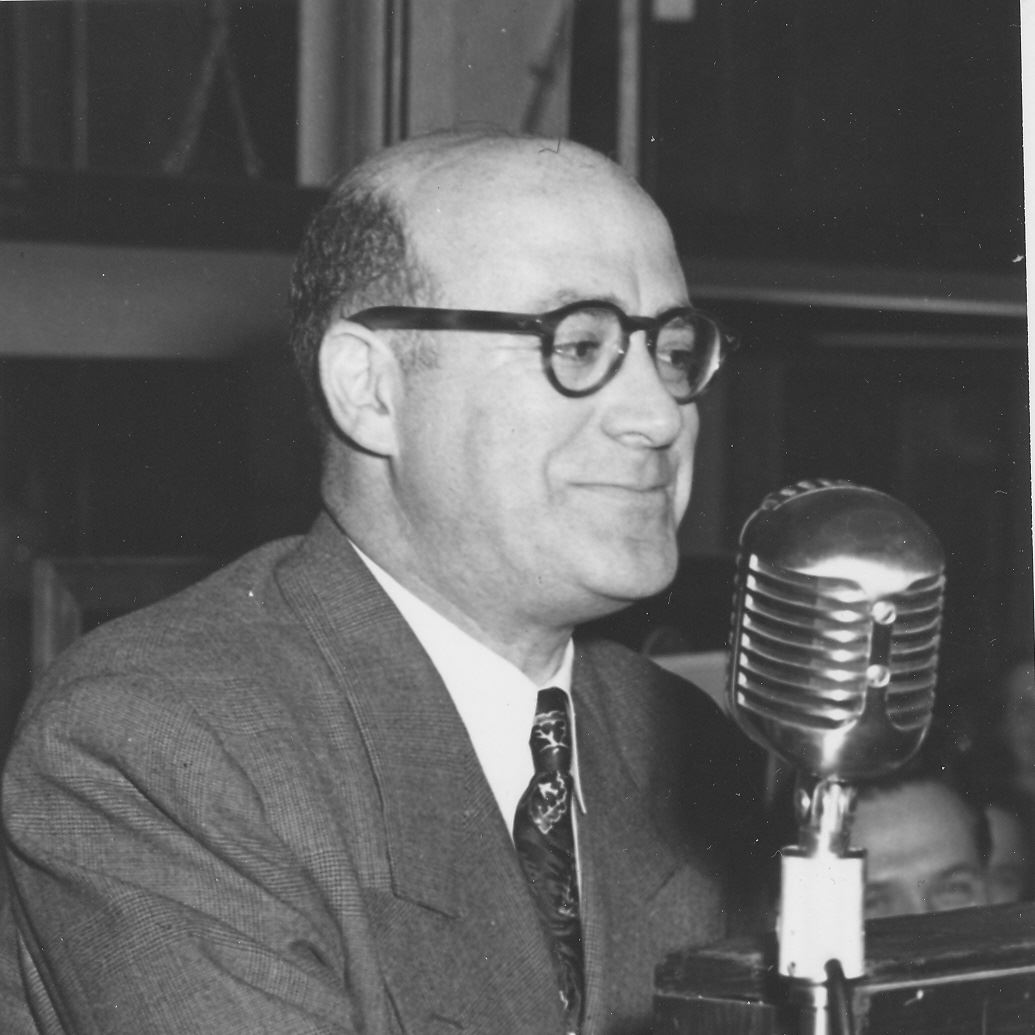Hi-Fi Hall of Fame
People Inductee
Sidney Shure

Introduction
Sidney Shure was born on March 27, 1902, in Chicago, Illinois. In 1925, at the age of just 23, he started a mail order business selling radio parts and kits. The Shure Radio Company would go on to become an audio products manufacturer known for microphones, headphones, phono cartridges, and other audio equipment. Sidney Shure’s dedication to excellence, integrity, and innovation helped shape Shure into a leading name in the audio industry.
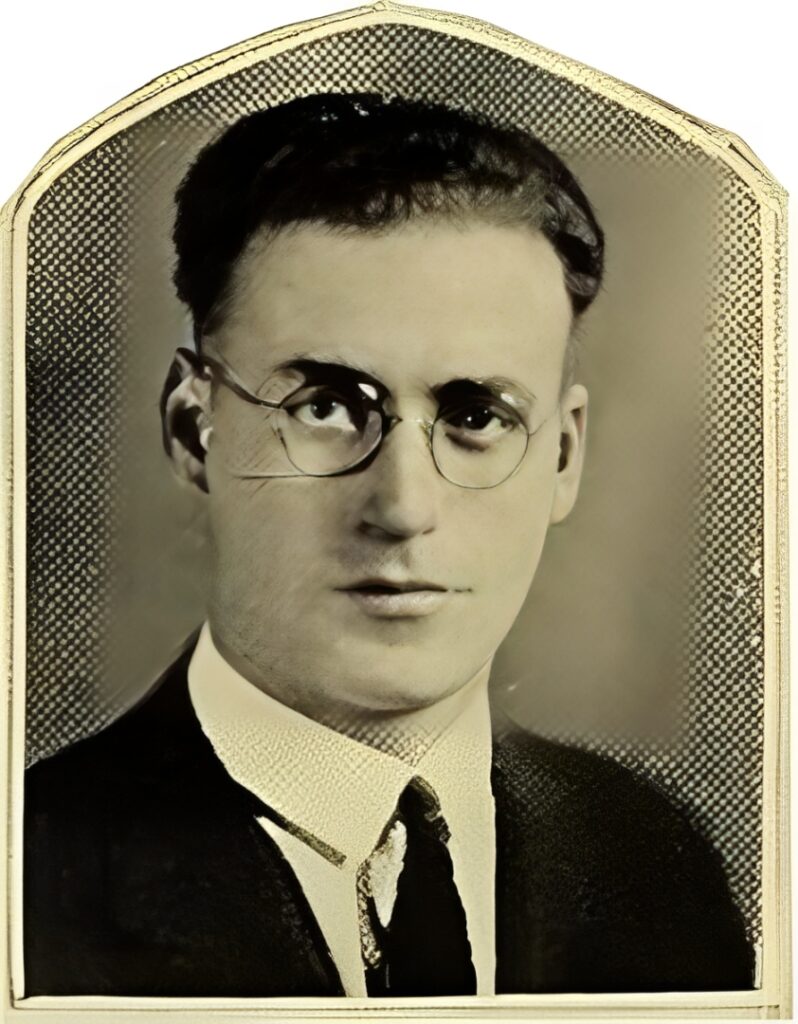
Let’s look at the life of Sidney Shure to see why he belongs in the Hi-Fi Hall of Fame.
Founding of Shure Radio Company
The Shure Radio Company began as a one man business selling radio parts kits. At the time, radio was an emerging technology, and there was a growing demand for components and kits among amateur radio enthusiasts.

Shure’s family was already established in the mail order business, so Sidney was able to draw on the family’s expertise to launch his own mail order business. He published an annual catalog called “Shure Shots” which featured hundreds of radio parts.

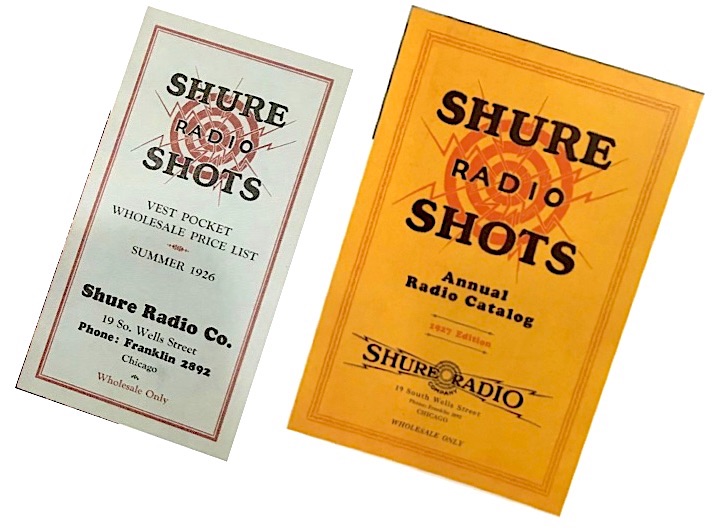
By 1928 the business was growing so Sidney hired his younger brother and renamed the company “Shure Brothers”. The great Depression began in 1929 and the company was forced to downsize to survive. The radio industry was also evolving rapidly, so Sidney Shure shifted the company’s focus to manufacturing microphones. In 1931, the company introduced its first microphone, the Model 33N, marking the beginning of its dominance in the audio industry.

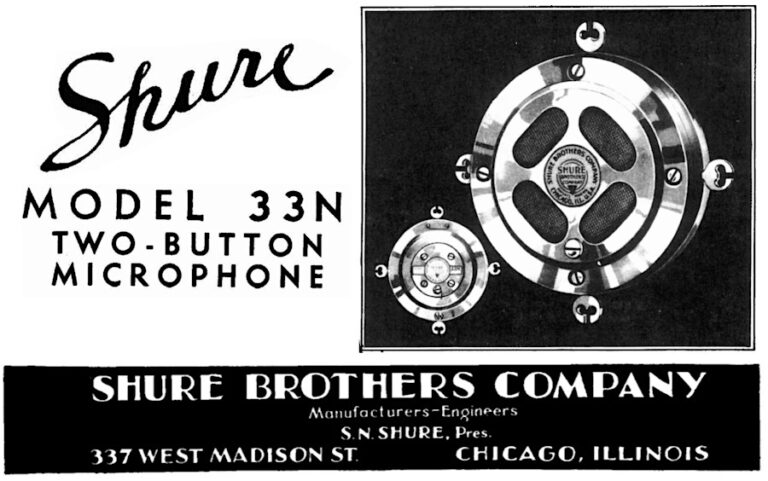
In the 1930s, a new technology based on the piezoelectric effect made it possible to manufacture “crystal” microphones which outperformed the older carbon-based designs and didn’t require a power source. Shure developed some of the best crystal microphones, including the Models 71 and 700A.
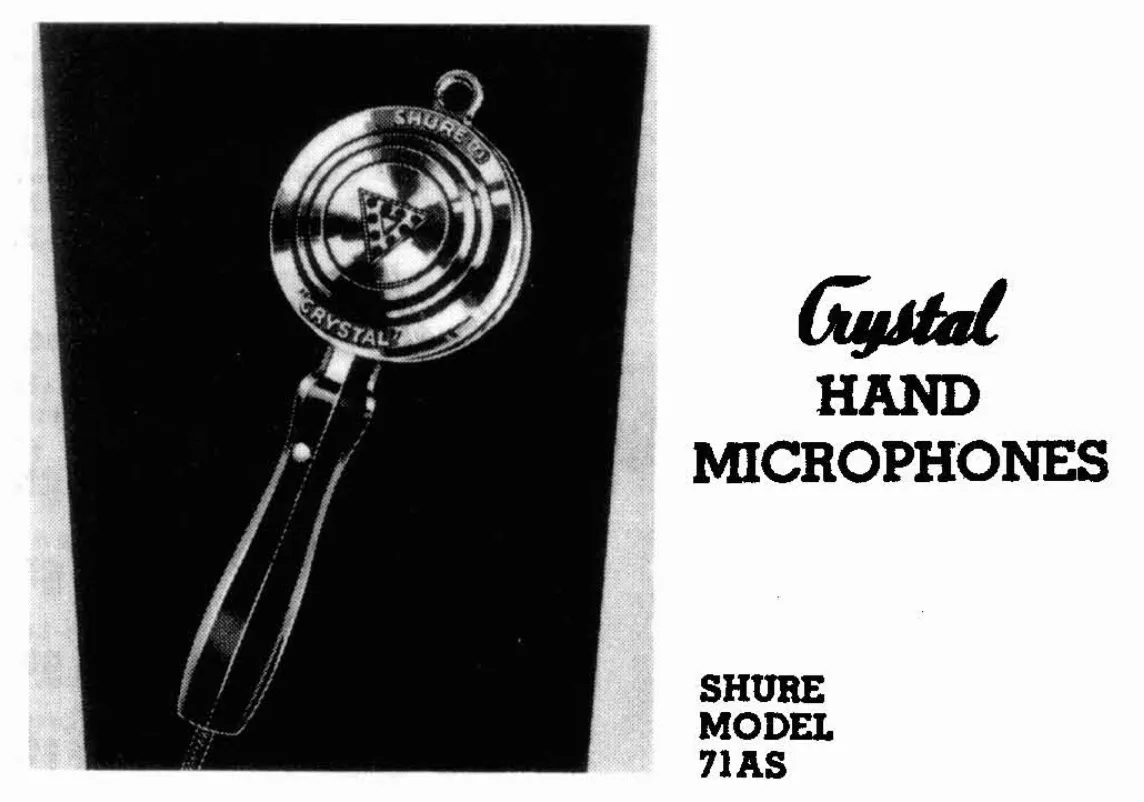

Shure’s First Hi-Fi Product: Model 99A “Zephyr” Tonearm
The 1937 catalog included one of Shure’s first Hi-Fi products, the Model 99A “Crystal Zephyr” tonearm and cartridge. Designed for the do-it-yourself enthusiast, the Zephyr could be installed on any turntable to play 10-inch and 12-inch records.
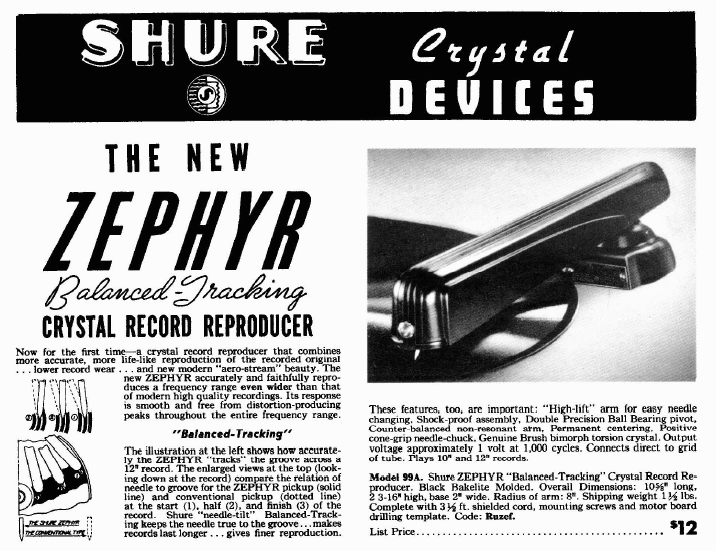

During World War II, Shure switched to wartime production, supplying microphones and other communication equipment to the United States military. It was during this period that Shure introduced the iconic Model 55 “Unidyne” microphone; more on that below.
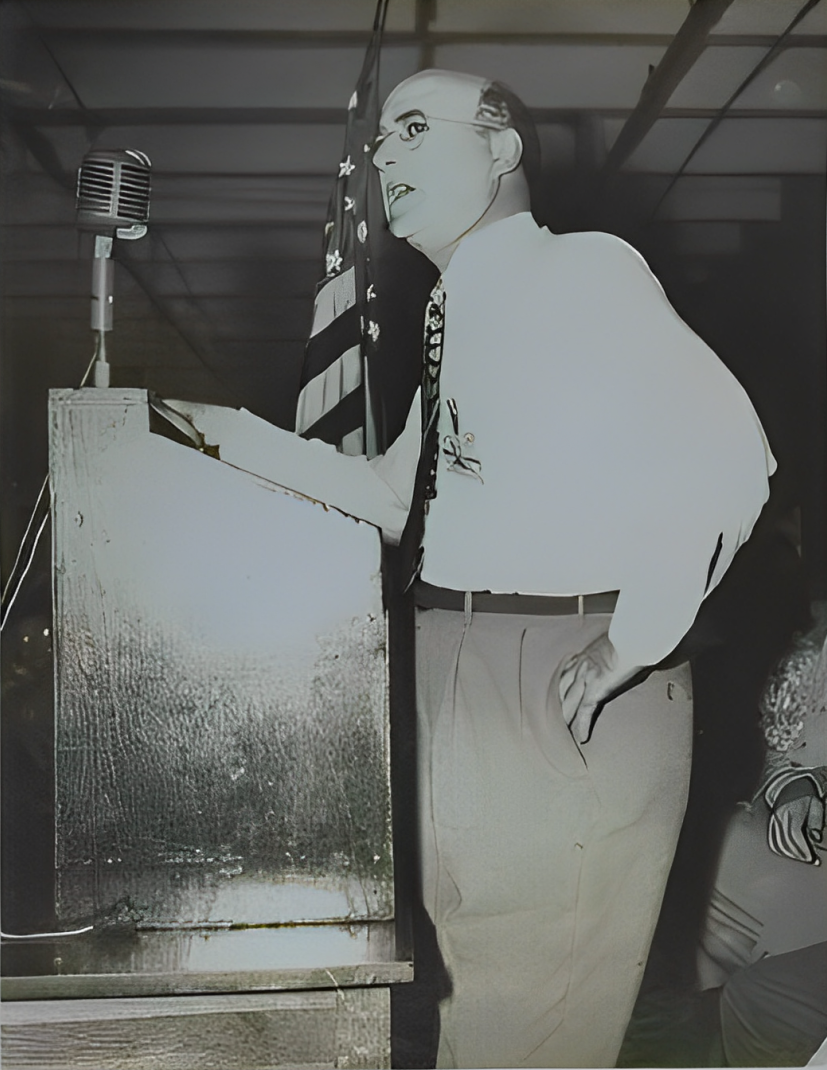
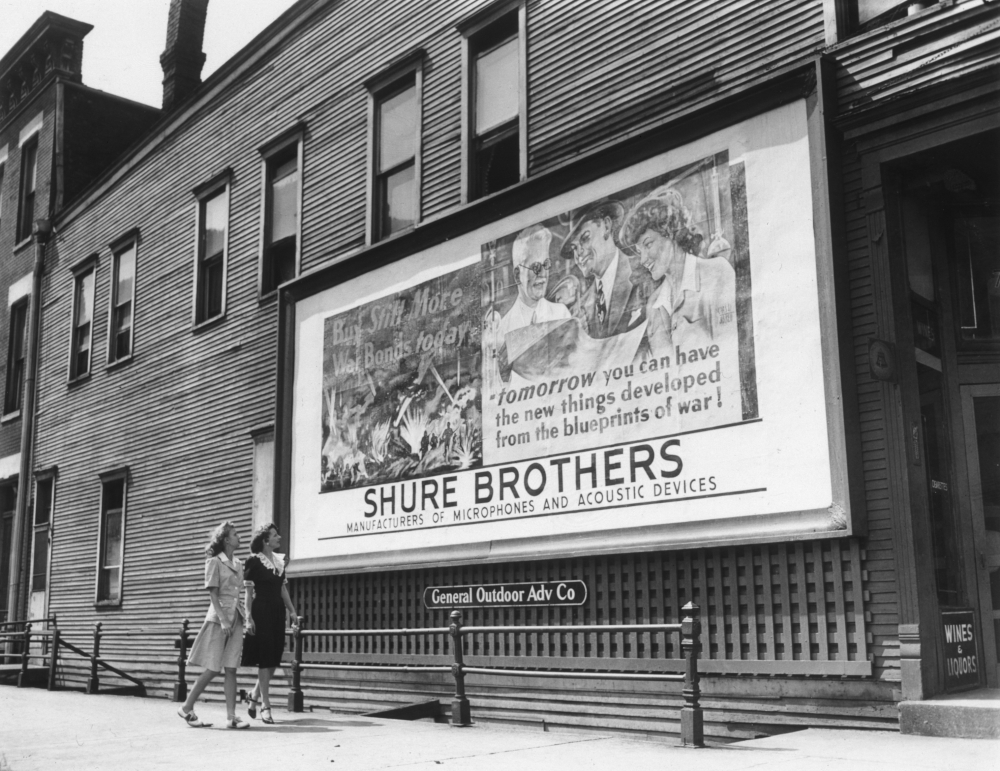
Post-War Focus on Consumer and Professional Audio
After the war, Sidney Shure returned the company’s focus to consumer and professional audio equipment, producing high-quality microphones, phonograph cartridges, and audio electronics. Home Hi-Fi systems incorporating record players were becoming popular, and by 1946, Shure had resumed production of products for this market, including a range of crystal “lever” phono cartridges and “Glider” pickup (tonearm).

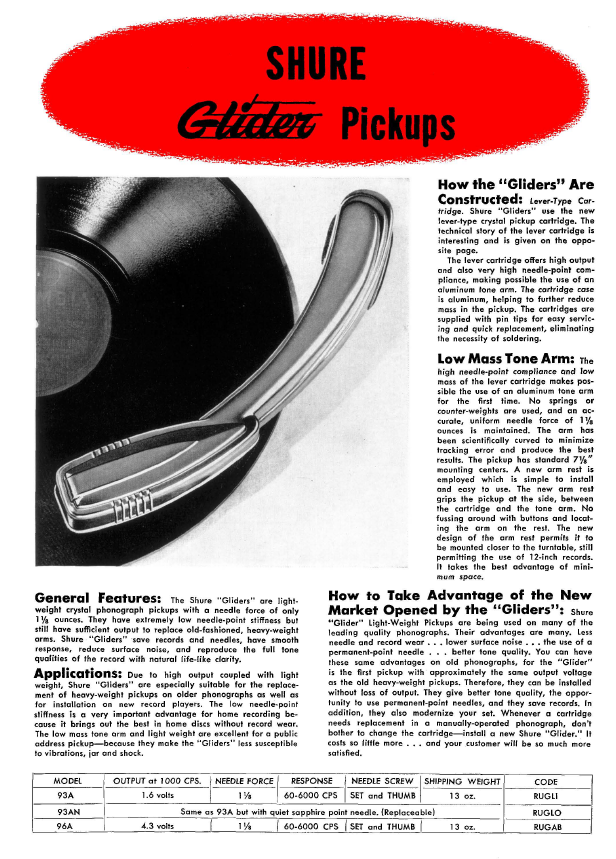
Shure also developed wireless microphone systems, beginning with the Vagabond 88 in 1953, which was one of the first wireless microphones.

In 1957, Shure released a phono cartridge called the “Music Lovers” model ML44. It was a ceramic pickup with a twin lever coupling and the ability to play three speeds of records. Two different record styli were included (1 mil and 3 mil) and were interchangeable by the user.

Also in 1957, Shure released one of the world’s first “moving magnet” phono cartridges. Moving Magnet technology provided superior sound quality and lower tracking force compared to earlier crystal models. The M1 “Studio Dynetic” cartridge was integrated into the M12 and M16 tonearms. The tracking force was just one gram, and the diamond stylus tip had a radius of 0.0007 inch.
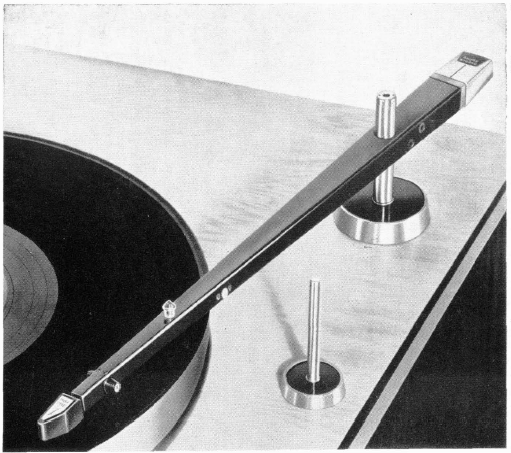
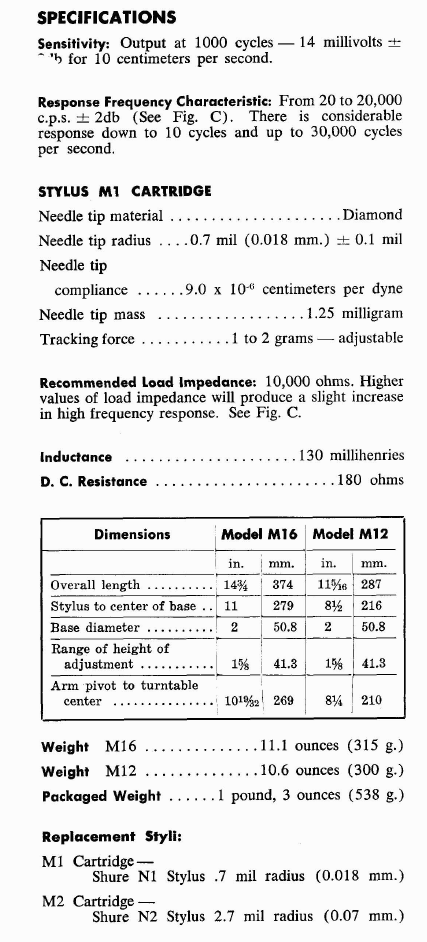
By 1960, Shure was producing a range of moving magnet cartridges which they called “Dynetic”. Three of the earliest models were the M3D, M5D, and M7D.
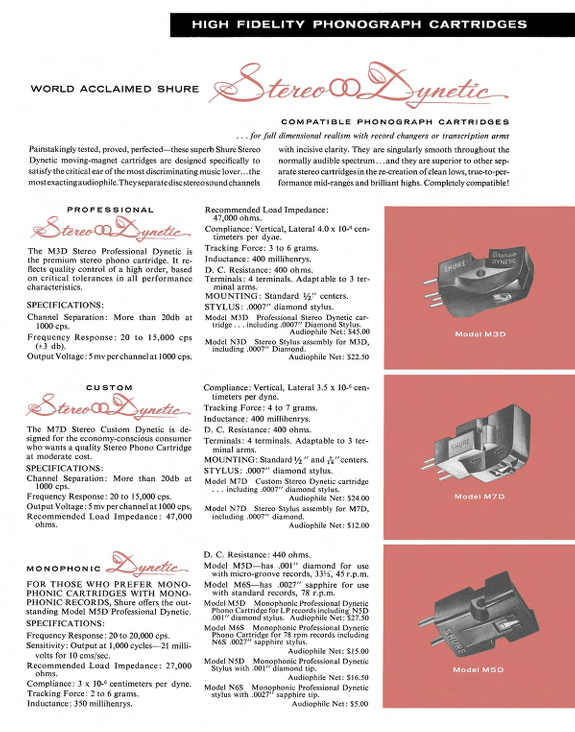
In 1966, Shure introduced the legendary SM57 and SM58 microphones. These microphones were superb in every aspect and soon became industry standards for live sound and recording.
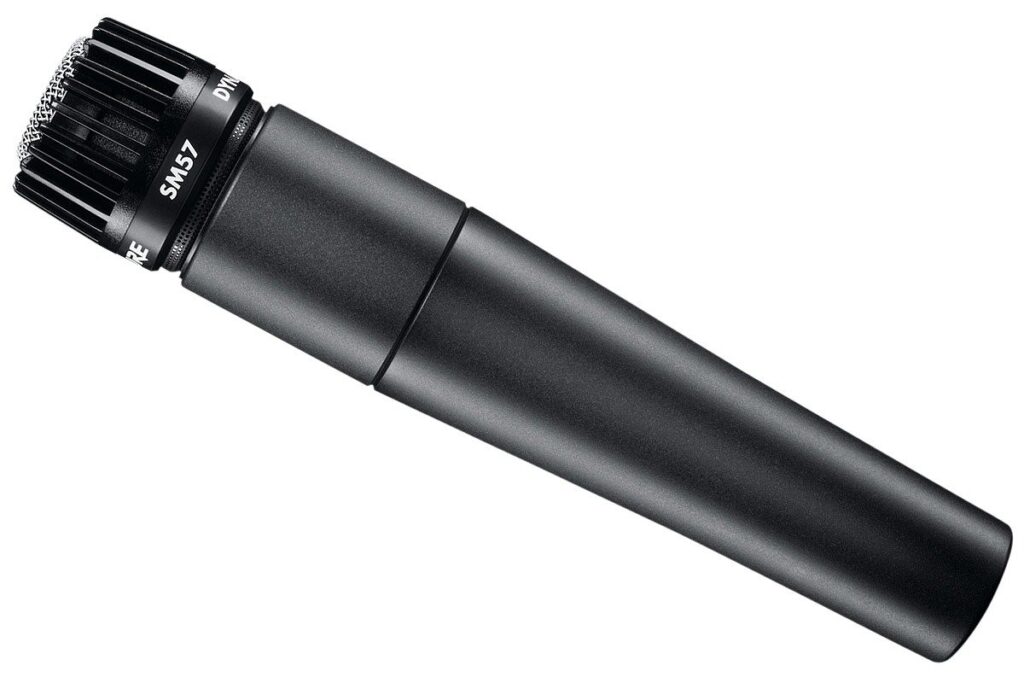

Shure Phono Cartridges
For Hi-Fi enthusiasts, Shure was best known for their excellent phono cartridges. Let’s take a look at two of Shure’s most iconic models.
In 1964, Shure released a new phonograph cartridge, the V15, which became known for its precision and high fidelity sound. The name V15 referred to the optimum vertical angle of 15 degrees between the record stylus (needle) and the surface of the record.
The V15 was a significant milestone in the world of Hi-Fi audio. It featured that 15-degree vertical tracking angle, and it employed a bi-radial elliptical stylus (measuring 0.0002 x 0.0009 inch), which allowed for precise tracking of the record grooves. The V15 was known for its exceptional trackability, meaning it could maintain contact between the stylus tip and the record groove at all frequencies using minimal tracking force. This cartridge quickly became a reference standard in the industry, setting the bar for performance and quality.
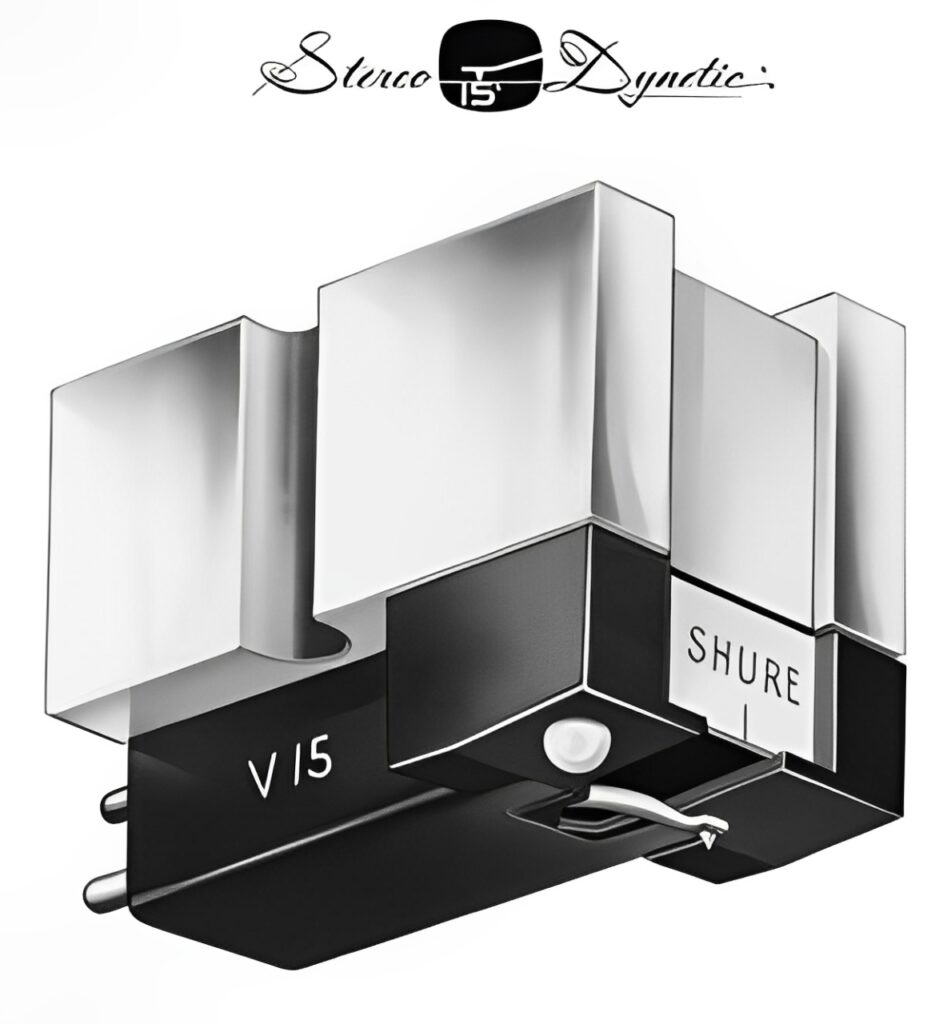
Over the years, Shure continued to improve and innovate on the V15 design, introducing several new versions with enhanced features and performance. The V15 Type II was released in 1966 with some changes to the stylus, improving frequency response and record fidelity.
The V15 Type III first appeared in 1973 and was popular with audiophiles due to its “Micro-Ridge stylus”, which enhanced detail retrieval. The Type IV was introduced in 1978, and the final iteration, the V15 Type V, came out in 1982. Shure continued to enhance the Type V for several years, culminating in the V15 Type VxMR, which employed a beryllium cantilever. It was in production from 1996 to 2005.
The Shure V15 phono cartridge was in continuous production for 41 years, a remarkable run for any Hi-Fi product!
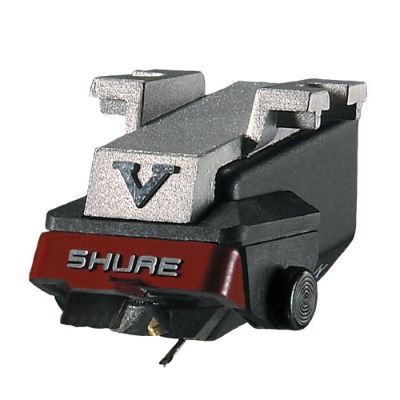
Shure’s other iconic phono cartridge was the versatile and rugged M44 cartridge. Building on that original “Music Lovers” (Model ML44) from 1957, Shure introduced many different version of the “M44” cartridge over the years. Disc jockeys loved the M44-7 which was originally introduced in the 1960s but popularized in the 1980s and 1990s. It was the “go to” cartridge for hip-hop DJs and “turntablists” due to it’s high output, strong tracking, and skip resistance.

Of course, as digital audio became popular, the demand for phono cartridges declined over time, and Shure made the difficult decision to discontinue making phono cartridges in 2018.
The remarkable and enduring Shure “Unidyne” Microphone
Although Shure was well known for phono cartridges, their most iconic product is likely the Model 55 “Unidyne” microphone.
The first Shure Unidyne was introduced in April 1939. It was one of the first single element, moving coil, unidirectional microphones in the world. It’s directional design was designed to reduce background noise and feedback by focusing on the singer. It was smaller than competing microphones, making it popular with public speakers, entertainers, and singers. It was available in three configurations with different impedances, to allow the engineers to use it in different configurations.
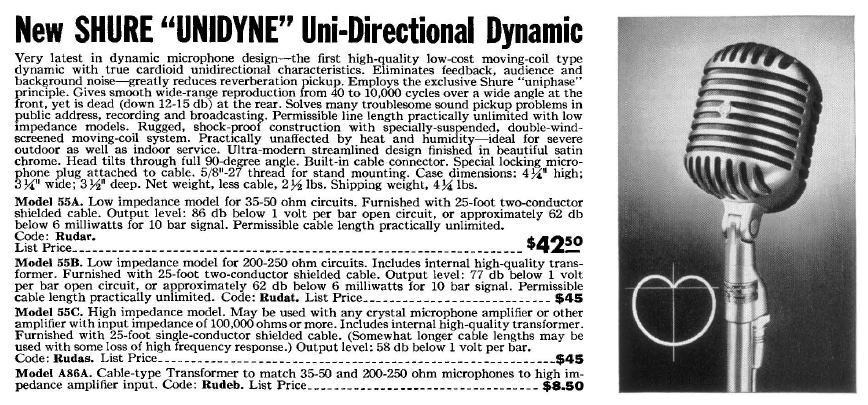
Since then, the Unidyne microphone has been improved many times, incorporating new features and technologies to improve performance. It has been used by many world leaders and entertainers in many different settings.
When Rudy Vallee scrapped his quaint, but old fashioned megaphone and switched to a Unidyne, he became the first prominent entertainer to adopt the technology for live performances. General Douglas MacArthur used a Shure Unidyne microphone on the deck of the U.S.S. Missouri during ceremonies ending the war with Japan in 1945. The Unidyne is obvious in the famous photo of President Harry S. Truman holding up the erroneous newspaper headline reading “Dewey Defeats Truman”. The film “Good Morning, Vietnam,” starring Robin Williams, made the Unidyne its virtual co-star. The microphone was also seen in print ads and posters for the film across the U.S.


In 1994, the U.S. Postal Service issued a series of postage stamps that prominently featured the Unidyne. One was the 29 cent Elvis stamp. The list of major entertainers who used or are still using Unidynes is remarkable: Marlene Dietrich, Dean Martin, Jerry Lewis, Tony Bennett, Buddy Guy, Tom Petty, LeAnn Rimes, Metallica, and Mariah Carey.
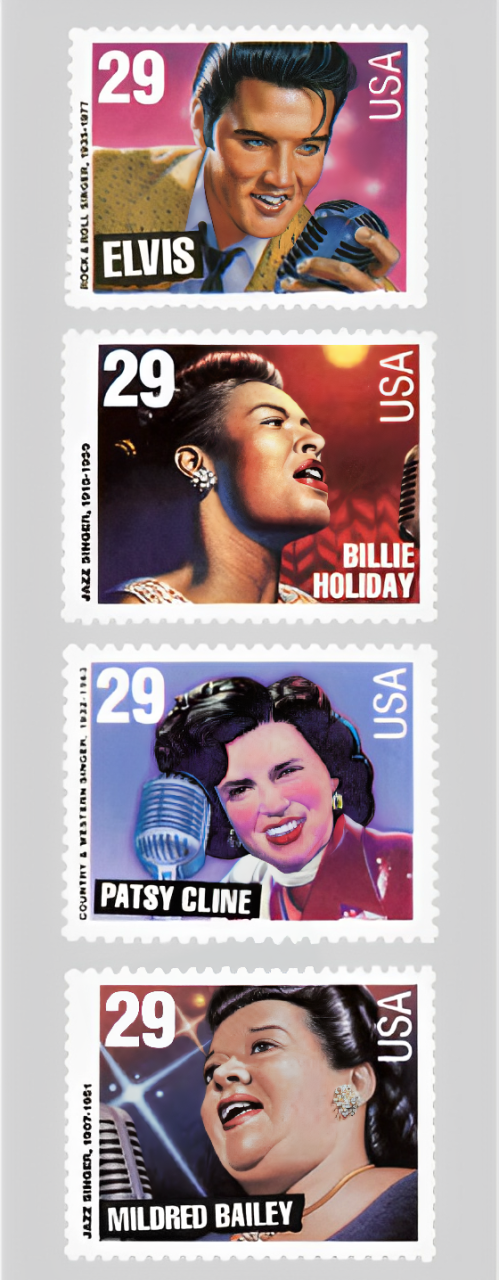
The aesthetic design of the Shure Unidyne was inspired by the “Art Deco” style of the 1930s. You can see that similarity in this Oldsmobile automobile ad from 1937.
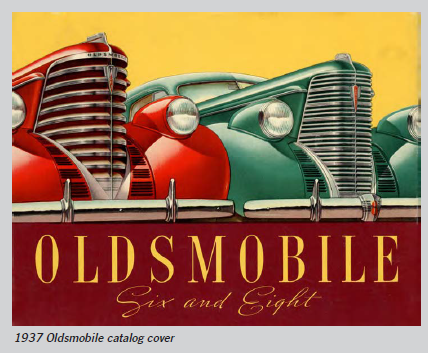

In 2025, when this was written, the Unidyne is still available from Shure. The latest model is the 55SH Series II. This classic beauty still resembles that original 1939 design.
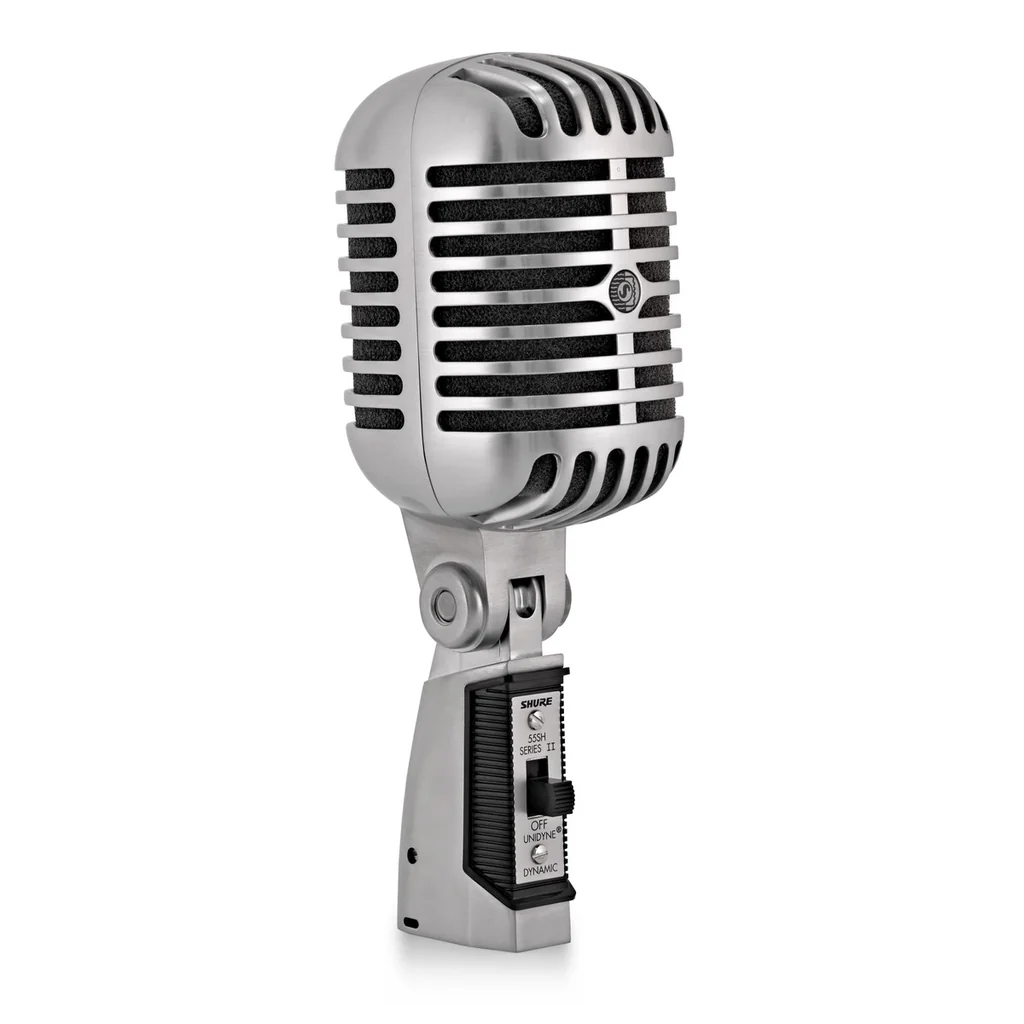
Retirement and Passing of Sidney Shure
In 1981, at the age of 79, Sidney Shure decided to “semi-retire” from running the company that he had founded 56 years earlier. He took on the position of chairman of the board, and promoted James Kogen to the role of president and general manager.
Sidney’s wife Rose Shure also played a pivotal role in the Shure company. She joined the company in 1949 and worked closely with her husband for many years.
Sidney Shure passed away at the age of 93 on October 17, 1995. After Sidney’s death, Rose Shure succeeded him as Chair of the Board of Directors. She was deeply committed to the welfare of the company’s employees and upheld the core values and principles established by her husband. Under her leadership, Shure expanded its product line and maintained high-quality standards. She remained as the company’s Chairman until her passing in 2016.
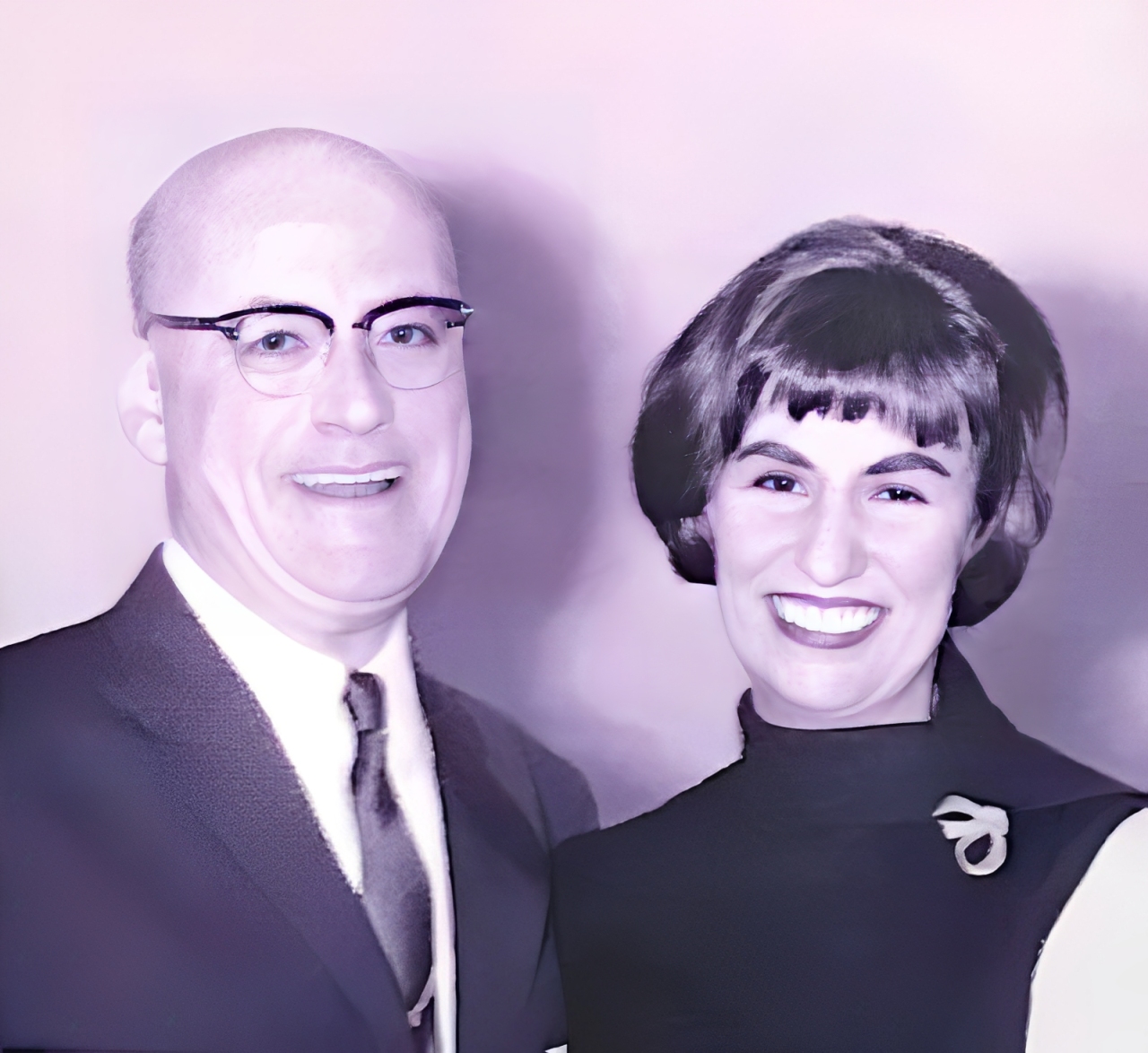
Sidney Shure – Philanthropist
Sidney Shure was not only a pioneer in the audio industry but also a dedicated philanthropist. His passion for education, the arts, and social causes left a lasting impact beyond his groundbreaking contributions to sound technology.
A firm believer in education and innovation, Shure championed STEM (Science, Technology, Engineering, and Mathematics) programs, particularly in audio engineering and acoustics. Under his leadership, Shure Incorporated established many scholarships and grants to support students pursuing careers in engineering and audio technology.
His philanthropy extended to the music community, backing organizations that promoted music education and performance. The company has sponsored musicians, sound engineers, and educational initiatives, providing access to professional quality equipment. Additionally, Shure has supported programs that create opportunities for young musicians and underserved communities to engage in the arts.
Sidney Shure also instilled a strong culture of corporate social responsibility within his company, encouraging employees to participate in charitable efforts. Shure Incorporated has contributed to numerous local and global charities, focusing on disaster relief, humanitarian aid, and environmental sustainability. The company has also worked to enhance accessibility in audio technology, ensuring high quality sound solutions for individuals with hearing impairments.
Though Sidney Shure passed away in 1995, his spirit of giving lives on through Shure Incorporated’s ongoing philanthropic initiatives. The company remains committed to education, innovation, and community support, honoring its founder’s legacy by investing in future generations of engineers, musicians, and audio professionals.
Shure Company Today
Today, the Shure company is a thriving business, designing and manufacturing a wide range of high quality audio equipment. Their products are aimed at four categories of users: content creators, entertainers, enterprise, and audio professionals. Their core business is microphones, but they also produce headphones, speakers, mixers, and audio software.
If you’d like to see the current product lineup, please visit their website here.
The Shure company will celebrate their 100th anniversary in 2025, and they are very proud of their history. Click here to read about Shure’s 100 years of audio excellence.
Sidney Shure: Induction into the Hi-Fi Hall of Fame
Sidney Shure was one of pioneers of the Hi-Fi industry. He founded a great company and infused in it a culture of excellence that is still thriving 100 years later.
During his tenure as leader, he gave the world some superb microphones, phono cartridges, and other audio equipment.
He was also a lifelong philanthropist who gave generously to his employees, to his community, to his country, and to his faith.
For these reasons and many more, Sidney Shure is inducted into the Hi-Fi Hall of Fame.
